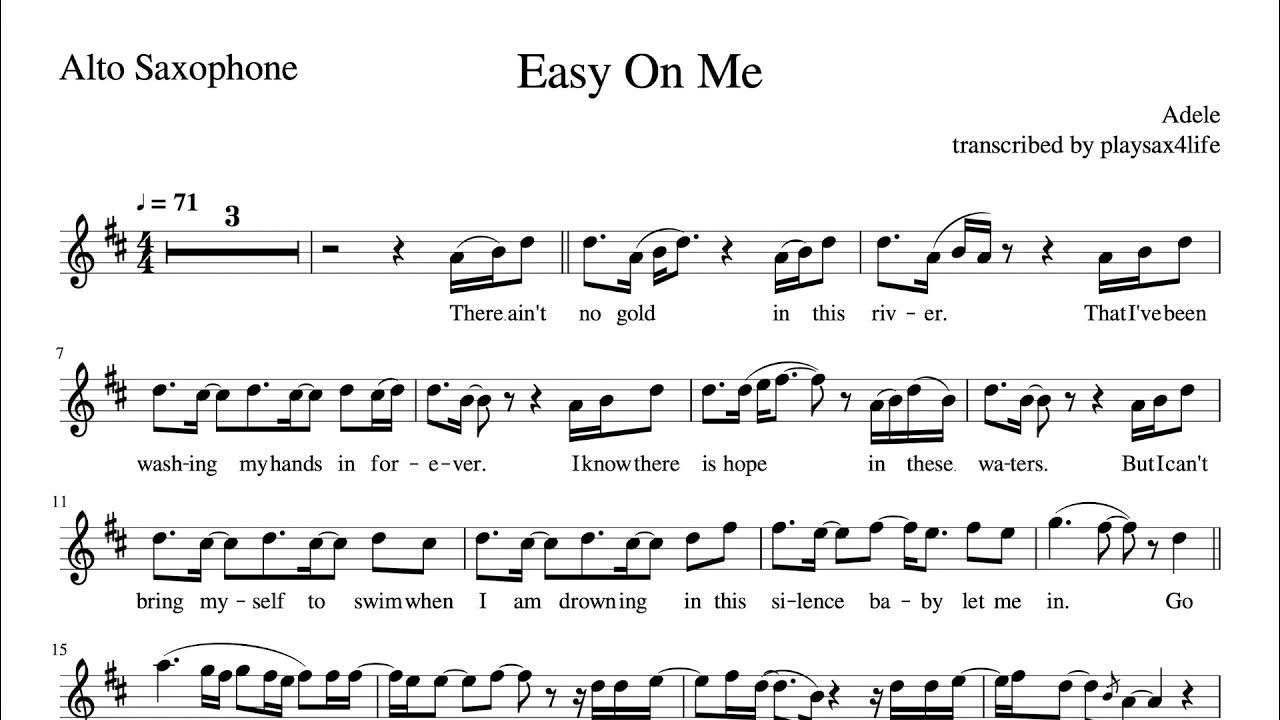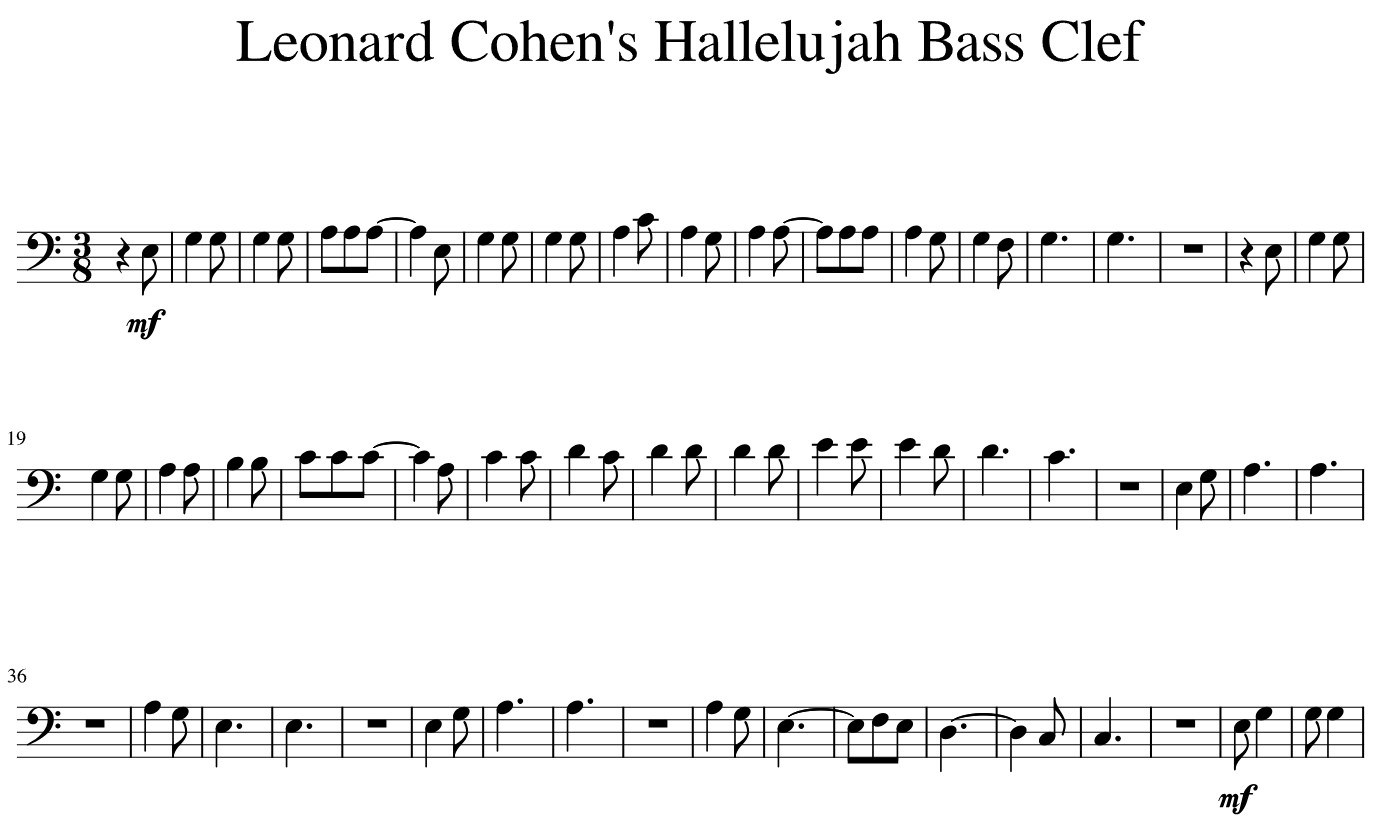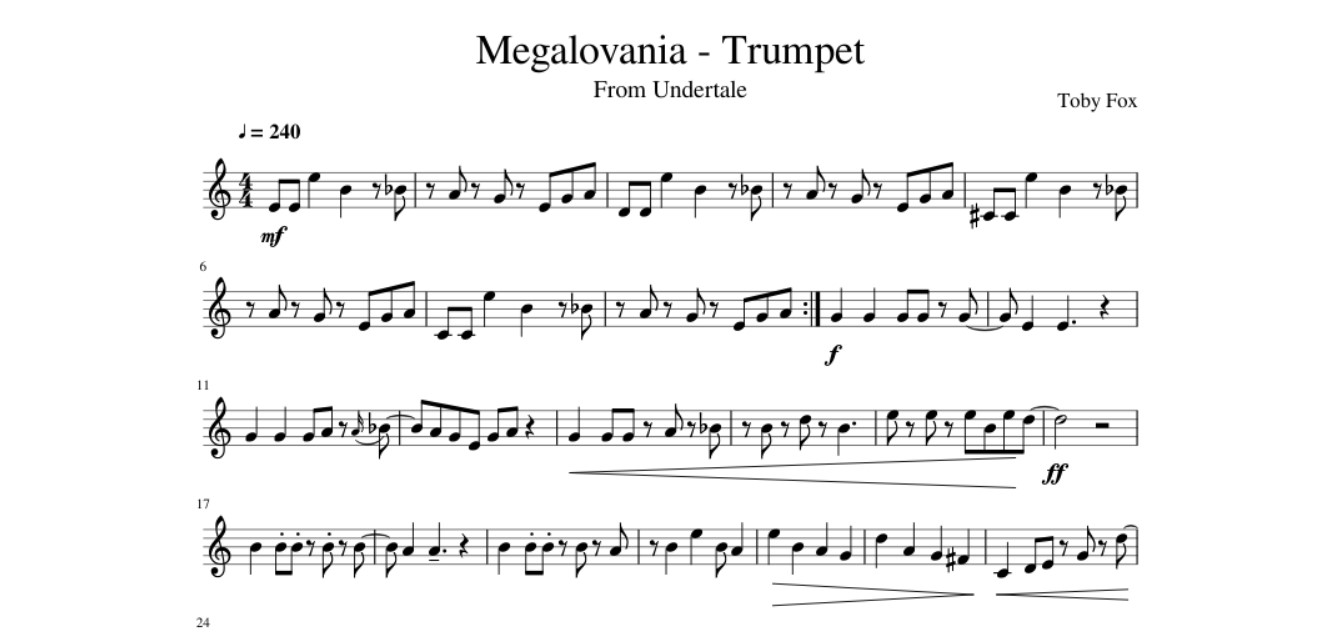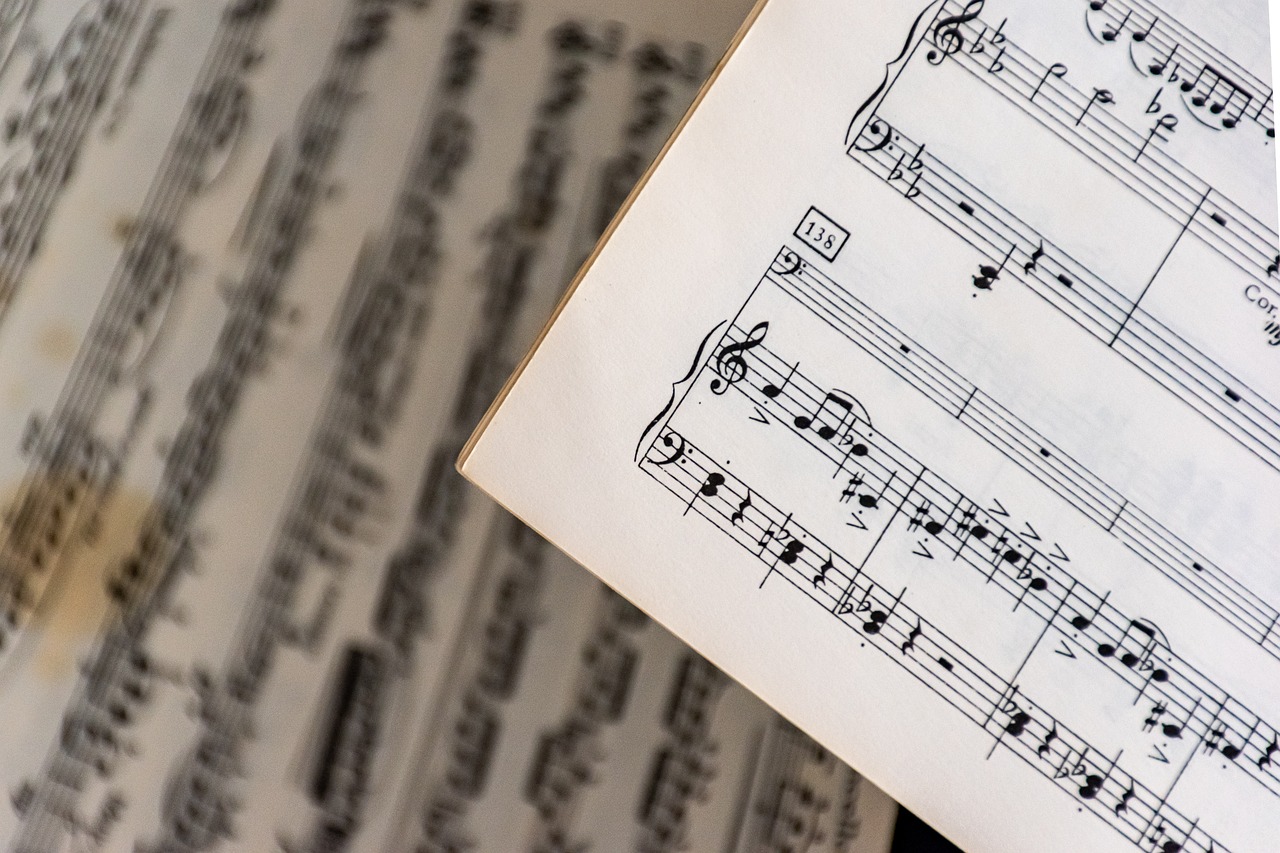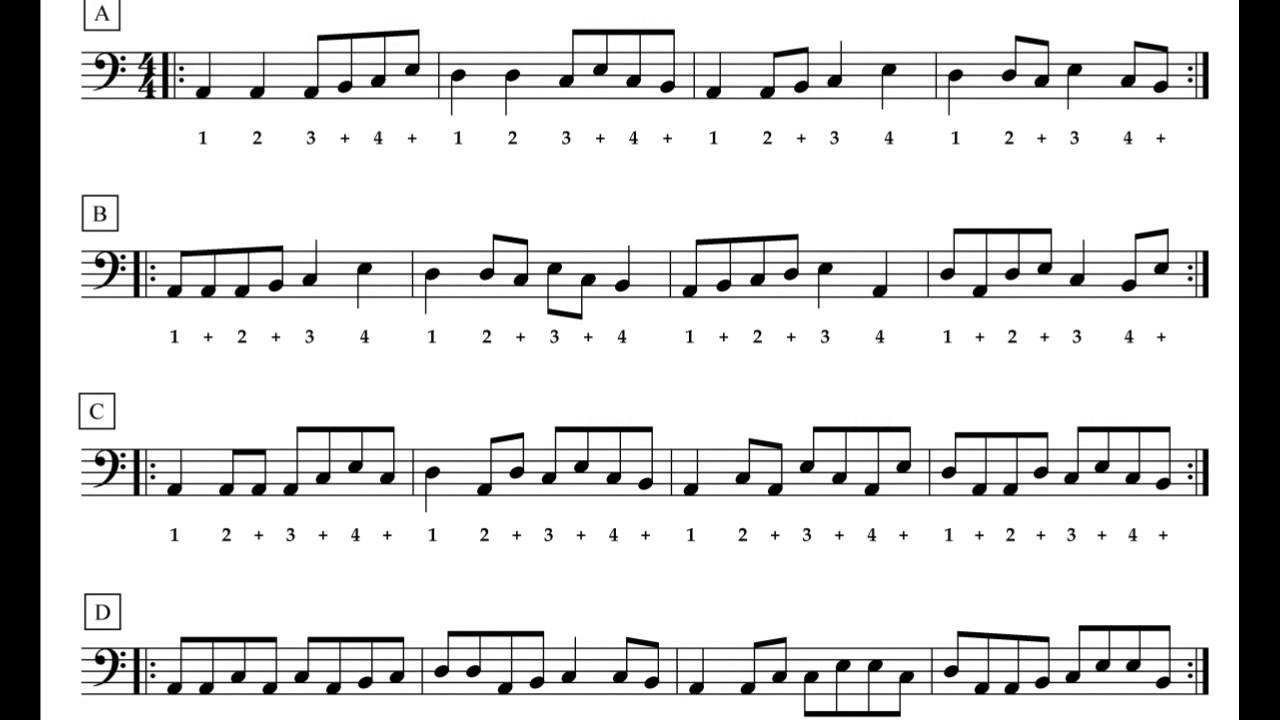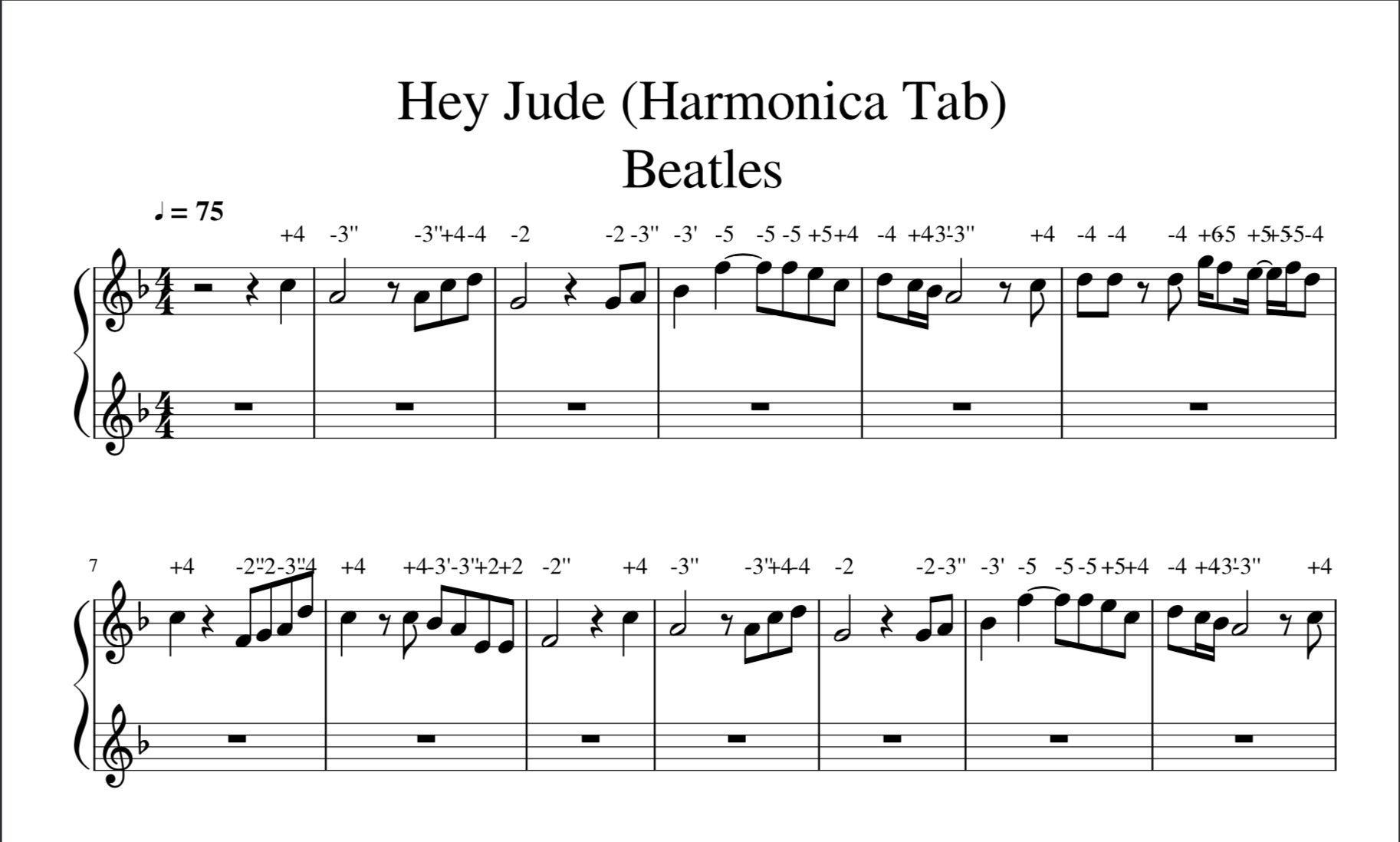Home>Production & Technology>Music Theory>Music Theory How To Read Music


Music Theory
Music Theory How To Read Music
Modified: February 9, 2024
Learn how to read music with our comprehensive Music Theory guide. Understand key concepts, symbols, and notation to unlock your musical potential.
(Many of the links in this article redirect to a specific reviewed product. Your purchase of these products through affiliate links helps to generate commission for AudioLover.com, at no extra cost. Learn more)
Table of Contents
- Introduction
- Understanding Musical Notation
- The Staff and Clefs
- Note Duration and Time Signature
- Pitch and the Musical Alphabet
- Reading and Identifying Notes on the Staff
- Identifying and Understanding Rests
- Reading and Interpreting Musical Symbols
- Key Signatures and Scales
- Intervals and Chords
- Dynamics and Articulation Marks
- Sight-Reading and Practice Tips
- Conclusion
Introduction
Welcome to the world of music theory! Whether you are a beginner musician, an aspiring composer, or simply someone who wants to deepen their understanding of music, learning how to read music notation is essential. Music theory is like the language of music, and reading music is akin to reading a book. It allows us to interpret and perform music accurately, communicate with fellow musicians, and explore the vast realm of musical possibilities.
At its core, music notation serves as a visual representation of the sounds we hear. It provides us with a system of symbols and markings that convey specific musical elements such as pitch, rhythm, dynamics, and more. By understanding and deciphering this musical code, you can unlock a whole new level of musical comprehension.
In this article, we will delve into the fundamentals of reading music notation. We will explore the staff and clefs, note duration and time signatures, pitch and the musical alphabet, reading and identifying notes on the staff, understanding rests, interpreting musical symbols, key signatures and scales, intervals and chords, dynamics and articulation marks, and even provide some tips for sight-reading and practice.
Whether you are a vocalist, instrumentalist, composer, or music enthusiast, the knowledge of music theory and the ability to read music will empower you to express yourself more accurately and confidently in the world of music. So, let’s dive in and explore the fascinating world of music notation!
Understanding Musical Notation
Musical notation is a system of symbols and markings that represent the different elements of music. It allows us to communicate and interpret musical ideas, whether it is a simple melody or a complex symphony. By understanding the basics of musical notation, you will be able to read and interpret sheet music effectively.
At the heart of musical notation is the staff, which consists of horizontal lines and spaces. The staff provides a visual reference for the pitch of the notes. Notes are represented by oval-shaped symbols placed on or between the lines and spaces of the staff. The position of the note on the staff indicates its pitch, with higher pitches placed towards the top of the staff and lower pitches towards the bottom.
Another important element in musical notation is the clef. Clefs are symbols placed at the beginning of the staff to indicate which pitches correspond to which lines and spaces. The most commonly used clefs are the treble clef and the bass clef. The treble clef is generally used for higher-pitched instruments such as the piano, violin, and flute, while the bass clef is used for lower-pitched instruments such as the cello, bass guitar, and tuba.
In addition to the staff and clefs, musical notation includes symbols for note duration, time signatures, key signatures, dynamics, articulation, and more. Note duration is represented by different shapes and flags attached to the note symbols, indicating how long the note should be held. Time signatures establish the rhythmic structure of a piece, indicating the number of beats per measure and the type of note that represents one beat.
Key signatures indicate the key in which a piece of music is written. They are represented by sharps or flats placed at the beginning of each staff line, indicating which notes should be raised or lowered in pitch. Dynamics and articulation marks provide instructions for the volume and expression of the music, indicating whether a passage should be played loudly or softly, smoothly or with a staccato effect.
Understanding these basic elements of musical notation is crucial for reading and interpreting sheet music accurately. With this knowledge, you will have the foundation to explore the intricacies of music theory and unlock the doors to countless musical possibilities.
The Staff and Clefs
The staff is one of the essential components of music notation. It consists of a set of horizontal lines and spaces, which serve as visual references for representing pitch. By understanding the staff and the role of clefs, you can accurately identify and interpret the pitches of notes in sheet music.
The staff typically consists of five lines and four spaces, although additional lines and spaces can be added when necessary. Each line and space represents a specific pitch. The note’s position on the staff indicates its pitch, with higher pitches placed nearer the top of the staff and lower pitches placed towards the bottom.
To differentiate the pitch levels further, different clefs are used. Clefs are symbols placed at the beginning of the staff to determine which pitches correspond to which lines and spaces. The two most commonly used clefs are the treble clef and the bass clef.
The treble clef, also known as the G clef, is recognized by its swirl and curl, which wraps around the second line from the bottom of the staff. It is mainly used for instruments with higher pitches, such as the piano’s right hand, violin, flute, or voice ranges that extend into the higher registers. The treble clef assigns different pitches to the lines and spaces of the staff, allowing you to identify notes accurately and play them in the correct octave.
The bass clef, also known as the F clef, is recognized by its two dots, which mark the line that represents the note F. The bass clef is typically used for instruments with lower pitches, including the left hand of the piano, cello, bass guitar, or lower voices. Like the treble clef, the bass clef assigns specific pitches to the lines and spaces of the staff, enabling you to read and play notes with precision.
While the treble and bass clefs are the most commonly used, there are other clefs, such as the alto clef and tenor clef, that represent intermediate pitch ranges. These clefs are primarily used for instruments like viola and trombone, respectively.
By understanding the staff and clefs, you can easily navigate through sheet music and identify the pitches of notes accurately. The staff provides a visual guide for representing pitch, while the clefs establish the relationship between the notes and the lines and spaces of the staff. With this knowledge, you can confidently read and interpret musical notation, allowing you to play or sing in the correct pitch and octave.
Note Duration and Time Signature
When reading sheet music, understanding note duration and time signatures is essential for accurately interpreting and performing the rhythm of a piece. Notes represent the duration of a sound, and time signatures provide information about the rhythmic structure of a musical composition.
Note duration is represented by different shapes and flags attached to the note symbols. The most common note durations include whole notes, half notes, quarter notes, eighth notes, and sixteenth notes. A whole note is a hollow oval-shaped note, indicating that it should be held for the entire duration of a measure. Half notes are similar but have a stem attached, representing half the duration of a whole note. Quarter notes, with a filled-in oval shape and stem, are held for a quarter of the duration of a whole note.
Smaller note values, such as eighth and sixteenth notes, have flags or beams attached to the stem, indicating their shorter duration. An eighth note is half the duration of a quarter note, while a sixteenth note is half the duration of an eighth note. When multiple smaller notes are grouped together, they can also be connected by beams to help visually distinguish them from individual notes. These smaller note values allow for more intricate rhythmic patterns and phrasing.
Time signatures are indicated at the beginning of a musical composition and consist of two numbers stacked vertically. The top number represents the number of beats in each measure, while the bottom number indicates the type of note that receives one beat. For example, a time signature of 4/4 is the most common, indicating that there are four beats per measure, and a quarter note receives one beat.
Other common time signatures include 3/4 (often used in waltz music), where there are three beats per measure, and a quarter note receives one beat, and 6/8 (often used in compound time signatures), where there are six beats per measure, and an eighth note receives one beat.
Understanding note duration and time signatures allows you to interpret and perform the rhythm of a piece accurately. By counting beats and recognizing the duration of each note, you can maintain a steady tempo and synchronize with other musicians. Time signatures also provide a framework for dividing the musical composition into organized phrases and sections.
Take the time to familiarize yourself with note durations and different time signatures. Practice counting and clapping along with various rhythms to develop a strong sense of timing. With this knowledge and practice, you will be able to read and perform sheet music with precision and confidence.
Pitch and the Musical Alphabet
Pitch is a fundamental concept in music, referring to the highness or lowness of a sound. Understanding pitch and the musical alphabet is crucial for accurately identifying and playing notes on a musical instrument or when singing.
The musical alphabet consists of the letters A, B, C, D, E, F, and G, which represent specific pitches. These pitches are organized in a repeating pattern on the piano keyboard and other instruments. The pattern of pitches repeats every octave, with each octave being a doubling or halving of the frequency of vibration.
On a piano keyboard, the white keys correspond to the pitches of the musical alphabet, while the black keys represent sharps (#) and flats (♭), which are the notes that fall between the main letters. The pitches on the keyboard ascend from left to right, with each note moving up by a half step (also known as a semitone) in pitch.
When reading sheet music, the position of the note on the staff indicates its pitch. Each line and space on the staff is assigned a letter name, starting from the bottom line of the staff (E) and moving upward. The spaces between the lines are also given letter names. For example, the lines of the treble clef staff, from bottom to top, are E, G, B, D, and F. The spaces spell out the word FACE.
The lines and spaces of the bass clef staff follow a different pattern. The lines, from bottom to top, are G, B, D, F, and A. The spaces spell out the word All Cows Eat Grass (A, C, E, G).
By understanding the musical alphabet and the corresponding pitches on your instrument, you can easily identify and play the correct notes. Whether you are reading sheet music, playing by ear, or improvising, this knowledge will serve as your foundation for navigating the world of music.
It is important to note that the musical alphabet is a relative system, and different instruments may use different starting pitches or have different tunings. For example, the guitar is typically tuned to EADGBE from the lowest string to the highest, while a violin is typically tuned to GDAE. Understanding the specific tuning and pitch range of your instrument will help you find your way around the musical alphabet.
Take the time to familiarize yourself with the pitches of the musical alphabet and practice playing scales and melodies using these pitches. With practice and experience, you will develop a strong sense of pitch and be able to identify and play notes with accuracy and confidence.
Reading and Identifying Notes on the Staff
Reading and identifying notes on the staff is a crucial skill for any musician. By understanding the placement of notes on the staff, you can accurately interpret sheet music and play or sing the correct pitches.
As mentioned earlier, the staff consists of horizontal lines and spaces that represent different pitches. The position of a note on the staff indicates its pitch. The lines and spaces of the staff are assigned letter names that correspond to specific notes of the musical alphabet.
In the treble clef, the lines from bottom to top are E, G, B, D, and F. The spaces spell out the word FACE. Therefore, a note placed on the bottom line represents the pitch E, while a note placed on the top line represents the pitch F. Similarly, the spaces between the lines represent the notes F, A, C, and E.
In the bass clef, on the other hand, the lines from bottom to top are G, B, D, F, and A. The spaces spell out the mnemonic All Cows Eat Grass, representing the pitches A, C, E, and G. A note on the bottom line of the bass clef staff represents the pitch G, while a note on the top line represents the pitch A.
When notes fall above or below the lines and spaces of the staff, additional lines can be added with short diagonal strokes, called ledger lines. These lines serve as extensions of the staff, allowing us to notate pitches beyond the five-line staff.
To identify a note on the staff, start by determining the clef. The treble clef is typically used for higher-pitched instruments or voices, while the bass clef is used for lower-pitched instruments or voices. Locate the note’s position on the staff and refer to the letter names assigned to the lines and spaces of that clef to determine its pitch.
When learning to read music, it can be helpful to practice identifying and naming notes on the staff. Start with simple exercises, gradually introducing more complex melodies and chords. With consistent practice, your ability to read and identify notes will improve, allowing you to read sheet music more confidently and accurately.
Remember, reading notes on the staff is only the beginning. As you progress in your musical journey, you will encounter ledger lines, different clefs, and even non-traditional notation. Stay curious, keep practicing, and embrace the joy of discovering new musical possibilities!
Identifying and Understanding Rests
When reading sheet music, it’s not just the notes that matter – rests play an equally important role in defining the rhythm and timing of a musical piece. Rests are symbols in musical notation that indicate a silent pause or a moment of silence, giving musicians a break from playing or singing. Understanding and identifying rests is essential for accurately interpreting the rhythm and phrasing of a composition.
Rests are represented by different symbols, each denoting a specific duration of silence. The most common rests include the whole rest, half rest, quarter rest, eighth rest, and sixteenth rest. Just like notes, rests have corresponding durations that determine how long the silence should last.
A whole rest is denoted by a small rectangular shape positioned vertically centered on the staff, representing a complete measure of silence. A half rest, on the other hand, looks like a small hat sitting above the third line of the staff, indicating a half measure of silence.
The quarter rest is a curving line that starts on the third line of the staff and extends down and to the right. It represents a quarter measure of silence. The eighth rest resembles the number “7” with a stem, indicating an eighth measure of silence, while the sixteenth rest looks like the number “7” without a stem, indicating a sixteenth measure of silence.
When rests are combined in a musical passage, they follow the same principles of rhythm and timing as notes. For example, a series of quarter rests in a 4/4 time signature indicates four beats of silence, while a combination of sixteenth rests can create intricate rhythmic patterns, contributing to the overall musical flow.
Identifying rests in sheet music is relatively straightforward. They are positioned on the staff in the same way as notes, with their placement determined by the rhythm and timing of the composition. When you encounter a rest, refer to its symbol and duration to determine the length of the silent pause before moving on to the next note or rest.
Understanding rests is crucial for musicians in maintaining a steady tempo, coordinating with other performers, and providing the necessary breathing spaces in vocal performances. By paying attention to rests and appreciating their role in the overall musical structure, you can bring a sense of clarity and precision to your interpretations.
Next time you come across a rest while reading sheet music, observe the symbol and duration, and embrace the moments of silence they offer. Remember that music is not only about the notes we play but also about the spaces in between, and rests allow us to appreciate the beauty of musical pauses.
Reading and Interpreting Musical Symbols
Sheet music is filled with various symbols and markings that provide valuable information to musicians regarding dynamics, articulation, expression, and more. Understanding and interpreting these musical symbols is essential for accurately conveying the intended musical ideas and bringing a composition to life.
One of the most common musical symbols is the dynamic marking. Dynamic markings indicate the volume or intensity of a passage and guide musicians in expressing the desired level of loudness or softness. For example, “piano” (p) indicates softness, while “forte” (f) signifies loudness. There are also additional dynamic markings such as “mezzo piano” (mp) for moderately soft, “mezzo forte” (mf) for moderately loud, and more extreme markings like “pianissimo” (pp) for very soft or “fortissimo” (ff) for very loud.
Articulation marks are another set of symbols that represent the manner in which notes are to be played or sung. For example, a short dot above or below a note indicates staccato, meaning that the note should be played or sung with a short and detached sound. A curved line above or below a series of notes signifies a slur, indicating that the notes should be played smoothly, connected, or sung in a single breath without separation.
Other musical symbols include fermatas, which are curved lines above or below a note or rest, indicating that the note or rest should be held for a longer duration than its written value. The crescendo and decrescendo symbols (< and > or the word “cresc.” and “decresc.”) indicate a gradual increase or decrease in volume, respectively. Repeat signs (||) indicate that a section of music should be repeated.
Key signatures, indicated by sharps (#) or flats (♭) placed at the beginning of a staff, provide information about the key in which a piece is written. They determine which notes are raised or lowered throughout the composition, simplifying the notation by indicating the default accidentals for certain pitches.
Time signatures, discussed earlier, provide information about the rhythmic structure of a piece and indicate the number of beats per measure and the type of note that receives one beat. They are typically displayed as a fraction or stacked numbers at the beginning of a composition.
When learning to read and interpret musical symbols, it is crucial to familiarize yourself with these symbols and their meanings. Study the common symbols used in your instrument’s repertoire and consult a music theory textbook or online resources for further guidance. Additionally, listening to professional performances and recordings can help deepen your understanding of how these symbols are applied in practice.
Remember, musical symbols enhance the expressiveness and clarity of a musical composition. By accurately interpreting these symbols, you can breathe life into the notes on the page and convey the emotions and intentions of the composer.
Key Signatures and Scales
In music theory, the concept of key signatures and scales go hand in hand. Key signatures indicate the key of a musical composition, while scales provide the foundation for understanding and exploring the harmonic and melodic structure within that key.
A key signature is a set of sharps (#) or flats (♭) placed at the beginning of a staff to indicate the key in which a piece is written. The key signature simplifies the notation by indicating the default accidentals for certain pitches throughout the composition. Sharps raise the pitch of a note by a half step, while flats lower the pitch by a half step.
In major keys, the key signature follows a specific pattern of sharps or flats. For example, the key of C major has no sharps or flats, while the key of G major has one sharp (F#). The keys of D, A, E, B, F#, C#, and G# major have progressively more sharps in their key signatures. On the other hand, the keys of F, Bb, Eb, Ab, Db, Gb, and Cb major have progressively more flats. The order of the sharps in the key signature is G, D, A, E, B, F#, and C#, following the circle of fifths.
Each major key has a corresponding relative minor key. The relative minor begins on the sixth scale degree of its relative major key. For example, the relative minor of C major is A minor. The key signature of the relative minor is the same as its relative major.
Scales provide a systematic organization of pitches within a key. The major scale is the most well-known scale and is the basis for much of Western music. It follows a specific pattern of whole steps and half steps, resulting in a distinct sequence of pitches. For example, the C major scale consists of the pitches C, D, E, F, G, A, and B, with whole steps between each note except for E to F and B to C, which are half steps.
Minor scales, including natural minor, harmonic minor, and melodic minor, are variations of the major scale. They have their own unique patterns of whole and half steps, resulting in different sequences of pitches. The natural minor scale has a lowered third, sixth, and seventh scale degrees compared to the major scale of the same key. The harmonic minor scale raises the seventh degree, while the melodic minor scale raises the sixth and seventh degrees when ascending but reverts to the natural minor scale when descending.
Understanding key signatures and scales allows musicians to navigate the tonal landscape of a composition. By recognizing the key signature, one can anticipate the accidentals that may occur throughout the music. Scales provide a framework for understanding melodic and harmonic relationships within a key, aiding in improvisation, composition, and overall musical comprehension.
When studying key signatures and scales, take the time to play and practice them on your instrument or sing them aloud. Familiarize yourself with the corresponding major and relative minor keys, and experiment with playing or improvising within those keys. This knowledge will broaden your musical vocabulary and deepen your understanding of the tonalities present in the music you play or listen to.
Intervals and Chords
In music theory, intervals and chords play a fundamental role in understanding and analyzing the relationships between notes. Intervals measure the distance between two pitches, while chords are combinations of three or more notes played simultaneously. Mastering the concepts of intervals and chords allows musicians to build harmonies, create melodies, and explore the expressive potential of music.
An interval is determined by the number of letter names and the number of half steps between two pitches. The smallest interval is the half step, which is the distance between two adjacent keys on a piano keyboard. A whole step encompasses two half steps. For example, the interval between C and D is a whole step, while the interval between C and C# is a half step.
Intervals are named according to the number of letter names they encompass and their size in half steps. For example, the interval between C and E is called a third because it includes three letter names (C, D, E). The interval between C and G is called a fifth as it encompasses five letter names (C, D, E, F, G). Intervals can be classified as major, minor, augmented, or diminished based on their size in half steps compared to the corresponding major or perfect interval.
Chords are formed by playing three or more notes simultaneously. The most basic chord is a triad, which consists of three notes played in thirds. The quality of a triad is determined by the intervals between its notes. For example, a major triad consists of a root, a major third (four half steps above the root), and a perfect fifth (seven half steps above the root). A minor triad, on the other hand, features a minor third (three half steps above the root) and a perfect fifth.
In addition to triads, chords can have additional notes, creating extended or altered chords. Common extensions include the seventh (a seventh interval above the root), ninth, eleventh, and thirteenth. Altered chords involve modifying one or more of the chord tones, such as adding sharps or flats.
Understanding intervals and chords opens up a world of possibilities for musicians. By recognizing different intervals, musicians can analyze melodies and harmonies, identify chord progressions, and create their own compositions. Chords provide the harmonic foundation for a piece of music, adding depth and emotion.
Take the time to study intervals and chords on your instrument. Practice playing different intervals and chords in various keys and inversions. Through practice and careful listening, you will develop a keen ear for the relationships between pitches and chords, enabling you to express yourself more creatively and effectively in your musical endeavors.
Dynamics and Articulation Marks
In sheet music, dynamics and articulation marks provide crucial instructions to musicians, shaping the expression and interpretation of a musical piece. Dynamics indicate the volume or intensity of the music, while articulation marks guide musicians on how to play each note, adding nuances and clarity to the performance.
Dynamics are represented by symbols or words that indicate the desired loudness or softness of a passage. The most common dynamic markings are “piano” (p) for soft and “forte” (f) for loud. Additional dynamic markings include “mezzo piano” (mp) for moderately soft, “mezzo forte” (mf) for moderately loud, “pianissimo” (pp) for very soft, and “fortissimo” (ff) for very loud. Combinations of these dynamic markings, such as “pianississimo” (ppp) or “fortississimo” (fff), indicate extreme softness or loudness.
Articulation marks provide instructions for how to play each note or passage. They specify the length or manner in which a note is to be played and help shape the overall phrasing and musicality. Common articulation marks include staccato (a dot placed above or below a note), which indicates a short and detached sound, and legato (a curved line connecting two or more notes), which signals a smooth and connected sound. Other articulation marks include accents (a sideways “V” placed above a note), which emphasizes the attack or starting point of a note, and slurs (a curved line connecting multiple notes), which indicates that the notes are to be played in a legato manner.
As a musician, it is essential to pay careful attention to dynamics and articulation marks when reading sheet music. These markings provide crucial guidance for bringing out the intended expression and emotion of the music. By following these markings, you can shape the volume, intensity, and character of each passage, creating a more nuanced and compelling performance.
When practicing dynamics and articulation, it is helpful to start by focusing on individual passages or phrases. Experiment with different levels of loudness or softness, exploring the full range of dynamics indicated in the sheet music. Pay close attention to the articulation marks and strive to play each note with the prescribed length and manner. As you become more comfortable, you can gradually incorporate dynamics and articulation into longer musical passages, allowing the music to come alive with expressiveness and clarity.
Remember, dynamics and articulation marks are integral components of musical interpretation. They provide a roadmap for expressing the composer’s intentions and infusing the music with your own unique interpretation. By giving careful attention to dynamics and articulation, you can elevate your musical performances and captivate audiences with your expressive playing.
Sight-Reading and Practice Tips
Sight-reading is the skill of playing or singing a piece of music for the first time without prior rehearsal. It requires the ability to quickly interpret the notation and perform the music with accuracy and musicality. While sight-reading can be challenging, it is an invaluable skill for musicians looking to expand their repertoire and adapt to new musical situations. Here are some tips to improve your sight-reading abilities:
- Begin with a quick scan: Before starting to play, take a moment to scan the entire piece. Look for key signatures, time signatures, tempo markings, and any challenging passages that may require extra attention.
- Focus on rhythm: Pay close attention to the rhythm and meter of the music. Clap or tap the rhythm before playing to internalize the pulse and subdivisions.
- Start with a slow tempo: Begin at a comfortable pace and gradually increase the tempo as you become more familiar with the music. It is better to play accurately at a slower tempo than to rush and make mistakes.
- Play through mistakes: Keep going even if you make mistakes. Avoid stopping to correct every error, as this disrupts the flow of the music. Instead, focus on maintaining a steady rhythm and continuing with the overall interpretation.
- Emphasize the musicality: While sight-reading, strive to bring out the musicality of the piece. Pay attention to dynamics, articulation, and phrasing, even if you cannot execute them perfectly. This will help create a more compelling performance.
- Practice regularly: Sight-reading is a skill that improves with consistent practice. Set aside dedicated time to sight-read different pieces of music, ranging in difficulty levels. Challenge yourself with unfamiliar styles and genres to broaden your musical vocabulary.
- Work on sight-reading exercises: Practice sight-reading exercises specifically designed to improve your skills. These exercises typically focus on rhythm, melodic patterns, and interval recognition. Gradually increase the complexity of the exercises as you become more comfortable.
- Record and review: Use a recording device to capture your sight-reading sessions. Listen back to identify areas for improvement, such as rhythmic inaccuracies or missed notes, and take note of your progress over time.
- Seek feedback: Ask for feedback from a music teacher, mentor, or fellow musician. They can provide valuable insights and suggestions for improvement.
- Have a sight-reading routine: Incorporate sight-reading into your regular practice routine. Set aside a few minutes each day to sight-read new music or revisit previously sight-read pieces to refine your interpretation.
Remember, sight-reading is a skill that takes time and practice to develop. Be patient with yourself and embrace the challenge. With dedicated effort and consistent practice, your sight-reading abilities will improve, allowing you to confidently tackle new musical repertoire and explore a wider range of musical opportunities.
Conclusion
As we conclude this exploration of music theory and the art of reading music, it’s evident that understanding and applying these concepts enhances our musicianship and deepens our connection with the world of music. By grasping the fundamentals of musical notation, such as the staff and clefs, note duration and time signatures, pitch and the musical alphabet, reading notes and rests on the staff, and interpreting musical symbols, we gain the ability to accurately interpret and perform musical compositions.
Moreover, key signatures and scales provide a framework for understanding tonality and exploring harmonic relationships. Intervals and chords allow us to analyze melodic and harmonic structures, creating harmonies and melodies that captivate our listeners. Dynamics and articulation marks shape our expression, adding depth and emotion to our performances. And through sight-reading and regular practice, we develop the skills necessary to adapt to new musical challenges and expand our musical horizons.
Remember, music theory is not merely an intellectual exercise, but a means to unlock the true potential of musical expression. Embrace the joy of learning, practicing, and applying music theory concepts in your musical journey. Whether you’re a beginner, an intermediate musician, or even an advanced player, continual exploration and application of music theory will deepen your understanding and proficiency.
So, let the language of music theory serve as a guide, introducing you to the rich tapestry of musical knowledge. Allow it to empower you to not only read sheet music, but also to improvise, compose, and truly communicate through your instrument or voice. The possibilities are endless.

